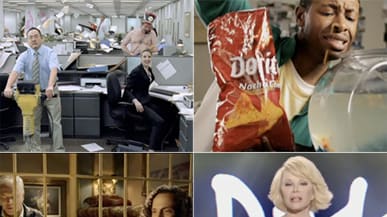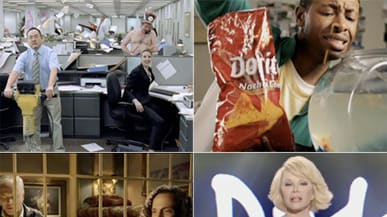It wasn’t created by consumers. It wasn’t part of a contest. It didn’t involve talking critters, anthropomorphic gadgets, over-the-hill celebrities or men getting slammed in the chops by canned goods. And (thankfully) it didn’t invite us to “join the conversation” at the end.
Yet somehow “ The Force,” the brilliantly executed old-school TV spot for the new Volkswagen Passat that aired during last night’s Super Bowl, managed to stand out in a sea of gimmicks, sophomoric humor, and creative and strategic mediocrity. Indeed, rather than repeatedly demanding media-saturated consumers to join the conversation, the VW spot, which featured a young boy in a Darth Vader costume desperate to assert his otherworldly powers, did what all effective ads do. It let the idea do the talking. And if the idea is entertaining, charming and powerful enough, the cultural buzz and social media windfall will follow.
Videos: Watch the 20 Best Super Bowl Commercials

In the case of “The Force,” the buzz began innocently enough when VW and its agency Deutsch LA made the unorthodox decision to post the spot on YouTube more than four days before kickoff. For decades, brands preferred to keep their Super Bowl creative under wraps until airtime, but with commercials costing up to $3 million per 30-second message, and the industry struggling to connect with audiences on the 364 days a year that are not Super Bowl Sunday, advertisers are desperate to max out their opportunities. “The Force” was an immediate hit, with the :60 version of the spot (only the :30 ran in-game) racking up more than 15 million views, including an impressive one million plus views during the game itself. Why? Because while most of the other car commercials focused on the cars, VW focused on the kind of people who use theirs. It told a simple story, rooted beautifully in a charming human truth. Without a wasted frame of film, anti-lock brake claim, or four paragraph block of legal copy to be seen.
VW was just one of a deep pool of auto makers that dominated the game this year, an encouraging sign for the economy, the car and ad industries to be sure. But other than “The Force,” the only auto spot to stand out was Chrysler’s brave and affecting two-minute manifesto “Born of Fire” about the heart and soul and future of Detroit and its auto industry. The commercial, beginning with a series of dark urban images and built-in logic and adrenaline, and culminating with a bold social and corporate statement from Detroit native Eminem, didn’t come close to scoring at the top of the myriad ad meters. Also, because it told a story, possessed a point-of-view and included more than 10 words, the Chrysler opus wasn’t a perfect fit for raucous game-night viewing. But because Chrysler (and the Portland ad agency Wieden & Kennedy) was bold enough to take a stand, I have a feeling that this morning throughout adland envious copywriters are lifting the hood on the script (“When it comes to luxury it’s as much about where it’s from as who it’s for” and “This is the motor city and this is what we do” and “Imported from Detroit”). Chief Marketing Officers for everything from airlines to tech companies are telling their agency partners: I want one of those.
If gauges such as the USA Today Ad Meter are to be trusted, the consumer generated gags for Doritos were winners, and Anheuser Busch’s “Dog Sitter” spot for Bud Light was the best in show. But by both Doritos’ and Bud’s standards, this was an especially uninspired collection of work, dependent more on sight gags and in Bud’s case, formulaic stereotypes, with not one ad worthy of a reprise, or a franchise-able keeper in the bunch. This was also an off-year for perennial Super Bowl standout Coca-Cola. With spots featuring border guards and dragon slayers, the people behind the happy factory seemed disturbingly preoccupied with averting catastrophe rather than spreading cheer.
On the once and future celebrity front, Snickers tried and failed to best last year’s magical tandem of Betty White and Abe Vigoda with Roseanne Barr and Richard Lewis. While on strategy, it felt much more forced than White’s star turn of 2010. Perhaps Snickers should have let Barr and Lewis ripen another 20 years. The biggest celebrity appearance of the night was Justin Bieber’s cameo with Ozzy Osbourne for Best Buy. While the commercial was mildly entertaining, it was easily one of the most discussed spots on Facebook and Twitter before, during, and after the game.
And Groupon, was it really necessary to steal a page from the Kenneth Cole book of culturally offensive ad tactics? Whose idea was it to introduce your supposedly $15 billion brand by having fun at the expense of Tibetans? For Super Bowl penance it should be forced to offer 50 percent off everything in the fine city of Detroit, and free Darth Vader masks for everyone.
James P. Othmer is the author of ADLAND: Searching for the Meaning of Life on a Branded Planet and the novel The Futurist .

